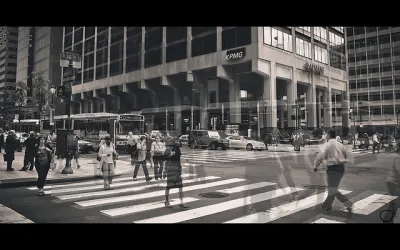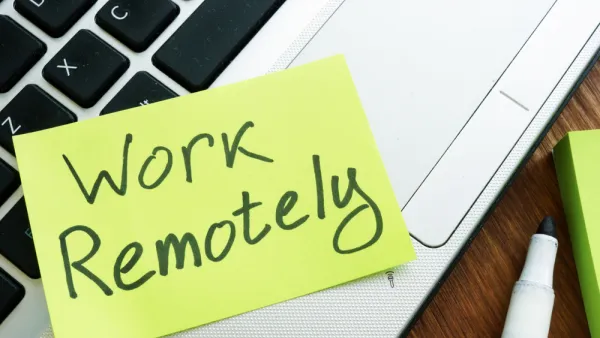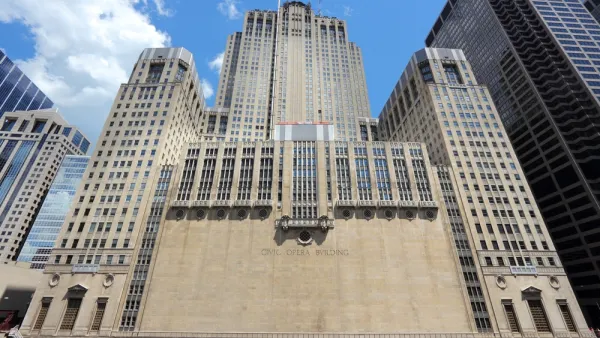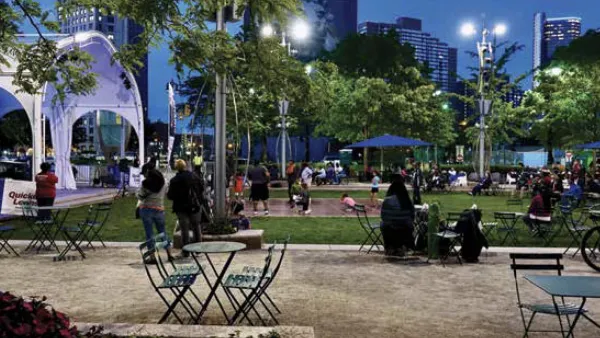Center City in Philadelphia offers a case study for one of the largest and potentially most consequential contingencies of the pandemic: What happens to downtowns is most workers never come back to the office?

Jake Blumgart focuses on Center City, the central business district of Philadelphia, as a case study in the potential mid- and long-term effects of the pandemic on downtowns all over the United States as the pandemic recedes and workers return to the office.
The question of whether workers will return at all, and in what numbers, is the big question driving the discussion. Bumgart dares to pose the question of what happens to Center City if workers in fact do not return.
The possibility for a sea change in the culture of work and commuting is already evident, writes Blumgart:
Before the pandemic, less than a tenth of the American labor force worked from home; now, more than a fifth are doing so. Yet even that undersells the extent of the change. Two-thirds of the nation’s professional-class workers, the kind who filled the offices of Center City and its counterparts across the country, were working from home at the height of the pandemic. The freelancing platform Upwork estimates that nationally, 20 to 25 percent of those professional jobs will become permanently remote over the next five years.
Even if 80 percent of workers go back to the office full time, the effect on the economy would be enormous, says one of the sources cited in the article. As Blumgart details, mobility and work has changed before—Philadelphia is a perfect example of a city evolving over the decades. The challenge is that a shift to remote work and a decline in foot traffic and economic activity in downtowns could have an outsized effect on cities like Philadelphia: "Office buildings could be forced to downsize, with corresponding hits to property and wage taxes. Then there’s the question of consumer spending: All those coffee breaks, catered lunches and happy hours add up to a lot of jobs, small businesses and sales tax revenue."
Much more detail and analysis are to be found in the feature-length source article at the link below. A discussion about what could go right for Center City, for example, can be found among the discussion about the realities of living and working in post-pandemic downtowns.
FULL STORY: What Will Happen to Center City If Commuters Never Return?

Analysis: Cybertruck Fatality Rate Far Exceeds That of Ford Pinto
The Tesla Cybertruck was recalled seven times last year.

National Parks Layoffs Will Cause Communities to Lose Billions
Thousands of essential park workers were laid off this week, just before the busy spring break season.

Retro-silient?: America’s First “Eco-burb,” The Woodlands Turns 50
A master-planned community north of Houston offers lessons on green infrastructure and resilient design, but falls short of its founder’s lofty affordability and walkability goals.

Test News Post 1
This is a summary

Analysis: Cybertruck Fatality Rate Far Exceeds That of Ford Pinto
The Tesla Cybertruck was recalled seven times last year.

Test News Headline 46
Test for the image on the front page.
Urban Design for Planners 1: Software Tools
This six-course series explores essential urban design concepts using open source software and equips planners with the tools they need to participate fully in the urban design process.
Planning for Universal Design
Learn the tools for implementing Universal Design in planning regulations.
EMC Planning Group, Inc.
Planetizen
Planetizen
Mpact (formerly Rail~Volution)
Great Falls Development Authority, Inc.
HUDs Office of Policy Development and Research
NYU Wagner Graduate School of Public Service




























